EVENTS
HOLY SEE DEBUTS PAVILION AT VENICE BIENNALE
For the first time in history, a major secular arts festival will include an exhibit from the Holy See. The president of the famous Venice Biennale, Paolo Baratta, spoke about the Vatican’s presence at this year’s May 2013 Biennale.
There is no shortage of artistic inspiration within the Vatican’s walls, he said.
“Here, at the foot of this magnificent polychrome Sistine Chapel, is where the cardinals — a community responsible for passing on the keys to the kingdom — meet. Here is where they gather. And Michelangelo envelops them in his vision to this day,” John Paul II wrote in his 2003 Polish-language poem entitled Roman Triptych.
Pope John Paul was not the only pontiff to reflect on the power of art to move souls.
Benedict XVI also believed in how “images at the hour of the great decision” speak to the viewer, as he wrote in the introduction to Pope John Paul’s book of poetry.
For the first time, the Holy See has brought together an exhibition to be presented at its very own pavilion at none other than Venice’s epic art event, the Biennale — an idea first alluded to in 2009.
Starting June 1, the 55th International Art Exhibition entitled Il Palazzo Enciclopedico (The Encyclopedic Palace) runs until November 2013 at the Giardini and at the Arsenale in the Adriatic lagoon city.
At a press conference, Biennale organizers explained that the Holy See’s show will be held at the Sale d’Armi (the Arms Room), an area which is being restored and will be converted into permanent pavilions.
Reports say that the sovereign nation of the Vatican will showcase a mix of emerging and established artists from around the world, fewer than ten men and women, set up in the 450-square-meter “Hall of the Holy See.” Works will reportedly draw from the first eleven chapters of the Book of Genesis. (By Kate Carlisle, ANSA)
THE PEOPLE OF SUMMORUM PONTIFICUM BACK IN ROME FOR THE YEAR OF FAITH CLOSING CEREMONIES
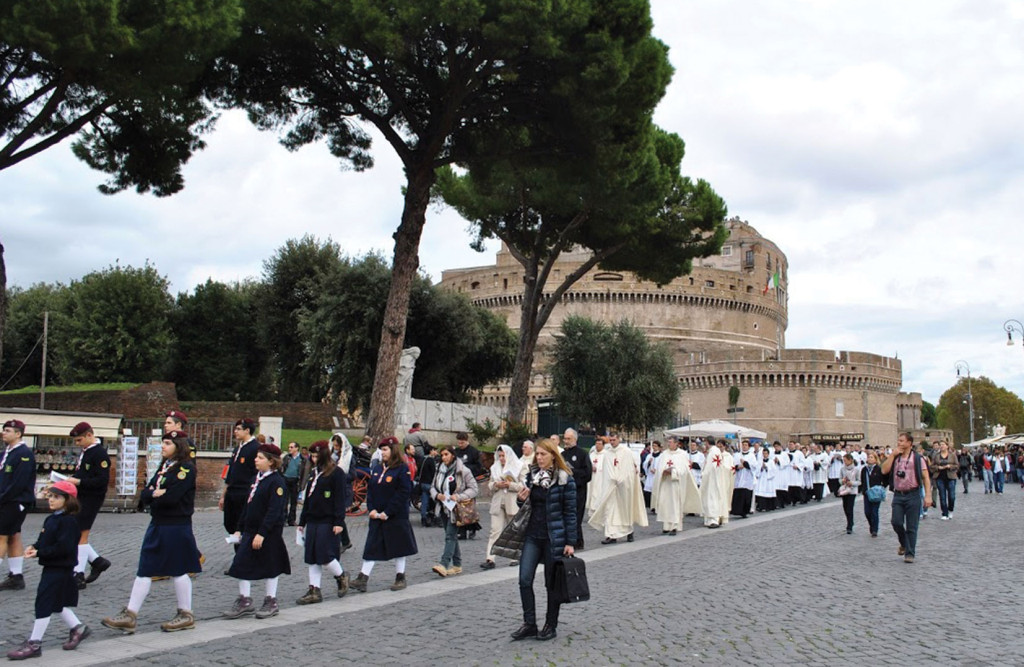
The procession near Castel Sant’ Angelo toward St. Peter’s on
Nov. 3, 2012, during the international pilgrimage “Una Cum Papa Nostro” (Together with Our Pope)
The Cœtus Internationalis Summorum Pontificum (CISP) gladly announces that it will end the Year of Faith just as it began it: with a pilgrimage Ad Petri Sedem (to the See of Peter).
Following the 2012 pilgrimage’s spiritual success, the people of Summorum Pontificum are once again meeting in Rome at the Apostle’s Tomb to bear witness to the traditional liturgy’s eternal youth. The CISP thus means to contribute to the harmony and building up of the universal Church, while remaining docile to the action of the Holy Ghost.
In order to respond to the encouragement to seguir adelante (keep forging ahead) on the part of Cardinal Cañizares Llovera, prefect of the Congregation for Divine Worship, at the end of the November pilgrimage, early in 2013 the CISP had asked St. Peter’s Basilica’s archpriest, Cardinal Angelo
Comastri, for access to the basilica. This March 14, Cardinal Comastri confirmed the basilica’s availability on October 26 at 11 am for the solemn celebration, which will be the high point of the pilgrimage.
The Cœtus Internationalis Summorum Pontificum thanks Cardinal Comastri for his hospitality and invites all groups linked to the Extraordinary Form of the Roman rite to start preparing themselves for this pilgrimage through prayer, and to take an active part in organizing it.
***
The Cœtus Internationalis Summorum Pontificum, which was established last July, is the organizer of the People of Summorum Pontificum Pilgrimage—diocesan priests and priests from EF communities, seminarians, religious, and the faithful attached to the traditional liturgy—in Rome. This year the steering committee is made up of: Giuseppe Capoccia, managing director; Guillaume Ferluc, secretary-general; Abbé Claude Barthe, chaplain. Giuseppe Capoccia, Italian senior civil servant, succeeds as councilor to Riccardo Turrini, who was named a judge at the Court of Appeals of Vatican City State on December 31, 2012.
Contact: +39 366 70 46 023 [email protected]
NOMINATIONS
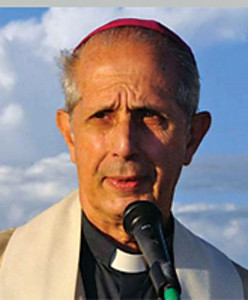
Mario Aurelio Poli
The archdiocese of Buenos Aires, Argentina, had been vacant since then-Archbishop Jorge Mario Bergoglio, S.J., was elected Pope Francis, Bishop of Rome. In his first appointment as Pope, Francis named Bishop MARIO AURELIO POLI, 65, as his successor as metropolitan archbishop of Buenos Aires (March 28).
The new archbishop was born in Buenos Aires in 1947 and was ordained a priest in 1978.
He received his doctorate in theology from the Pontifical Catholic University of Argentina.
He served in several pastoral and academic roles.
In 2002, Bishop Poli was named titular bishop of Abidda and auxiliary bishop of Buenos Aires.
He received episcopal ordination on April 20, 2002. On June 24, 2008, he was appointed resident bishop of the diocese of Santa Rosa.
In the Argentine Episcopal Conference he was a member of the Episcopal Commissions for Catholic Education and for Ministers, and is currently president of the Episcopal Commission for Catechesis and Biblical Ministry.
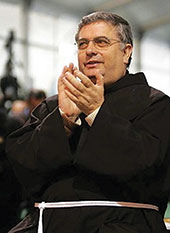
José Rodriguez Carballo.
Pope Francis named Fr. JOSÉ RODRIGUEZ CARBALLO, 59, superior of the Franciscans, as secretary of the Congregation for Institutes of Consecrated Life and Societies of Apostolic Life and also named him an archbishop (April 6).
Archbishop-designate José Rodriguez Carballo will hold the number two post at the Vatican office that oversees the world’s religious orders, which is led by Brazilian Cardinal João Braz de Aviz.
The Spanish-born minister general of the Order of Friars Minor fills a post left vacant in October 2012 when U.S. Redemptorist Archbishop Joseph W. Tobin was appointed to lead the archdiocese of Indianapolis.
Archbishop-designate José Rodriguez Carballo was born in Lodoselo, Spain, in 1953, joined the Franciscans in 1970 and was ordained a priest seven years later at the age of 23.
He studied at the Studium Biblicum Franciscanum in Jerusalem and the Pontifical Biblical Institute in Rome, then taught Scripture studies at the major seminary in Vigo, Spain, and for the theological faculty of Santiago de Compostela. He also taught the theology of consecrated life and served as formation director for young religious.
He served as president of the Union of Franciscan Provincial Ministers of Europe from 1993 to 1997.
In 2003, he was elected minister general of the Order of Friars Minor and was re-elected for another six-year term in 2009.
On March 18, Msgr. ALFRED XUEREB, 54, was officially appointed as Pope Francis’ private secretary after having served for five years as second secretary to Pope Benedict XVI.
Msgr. Xuereb replaced Polish Fr. Mieczyslaw Mokrzycki, who was personal secretary to John Paul II and then to Benedict XVI.
ANNIVERSARY
Pope Francis paid a private visit to the tomb of Blessed Pope John Paul II on April 2 in the evening, the eighth anniversary of John Paul’s death.
The Holy Father was accompanied by Cardinal Angelo Comastri, archpriest of the Vatican Basilica, and his personal secretary, Msgr. Alfred Xuereb, to the altar of St. Sebastian, where the Polish Pope is entombed.
Pope Francis prayed for a long while before Blessed John Paul II’s tomb and then also stopped at the tombs of Blessed John XXIII and St. Pius X.
GOOD FRIDAY HOMILY
On March 29, Pope Francis presided at the service to commemorate Christ’s death on the cross.
Following tradition, the homily during the celebration of the Passion of the Lord was delivered by the preacher of the papal household, Capuchin Fr. RANIERO CANTALAMESSA.
Fr. Cantalamessa said the Church must have the courage to return to the simplicity of its origins and rid itself of all “impediments” that block the Gospel message from reaching the world.
“We know what the impediments are that can restrain the messenger: dividing walls, starting with those that separate the various Christian churches from one another; the excess of bureaucracy; the remains of ceremonials, bygone laws and disputes which by now have become only debris,” he told the Pope.
It’s the same mission St. Francis of Assisi received when he heard, “Go, Francis and repair my church,” the Capuchin said.
He said St. Paul also wondered who could be up to “the superhuman task of being ‘the aroma of Christ’ in the world.”
Fr. Cantalamessa said St. Paul provides the answer in his Second Letter to the Corinthians, when he says the ability to speak in Christ comes from God, “who has indeed qualified us as ministers of a new covenant, not of letter but of spirit; for the letter brings death, but the Spirit gives life.”

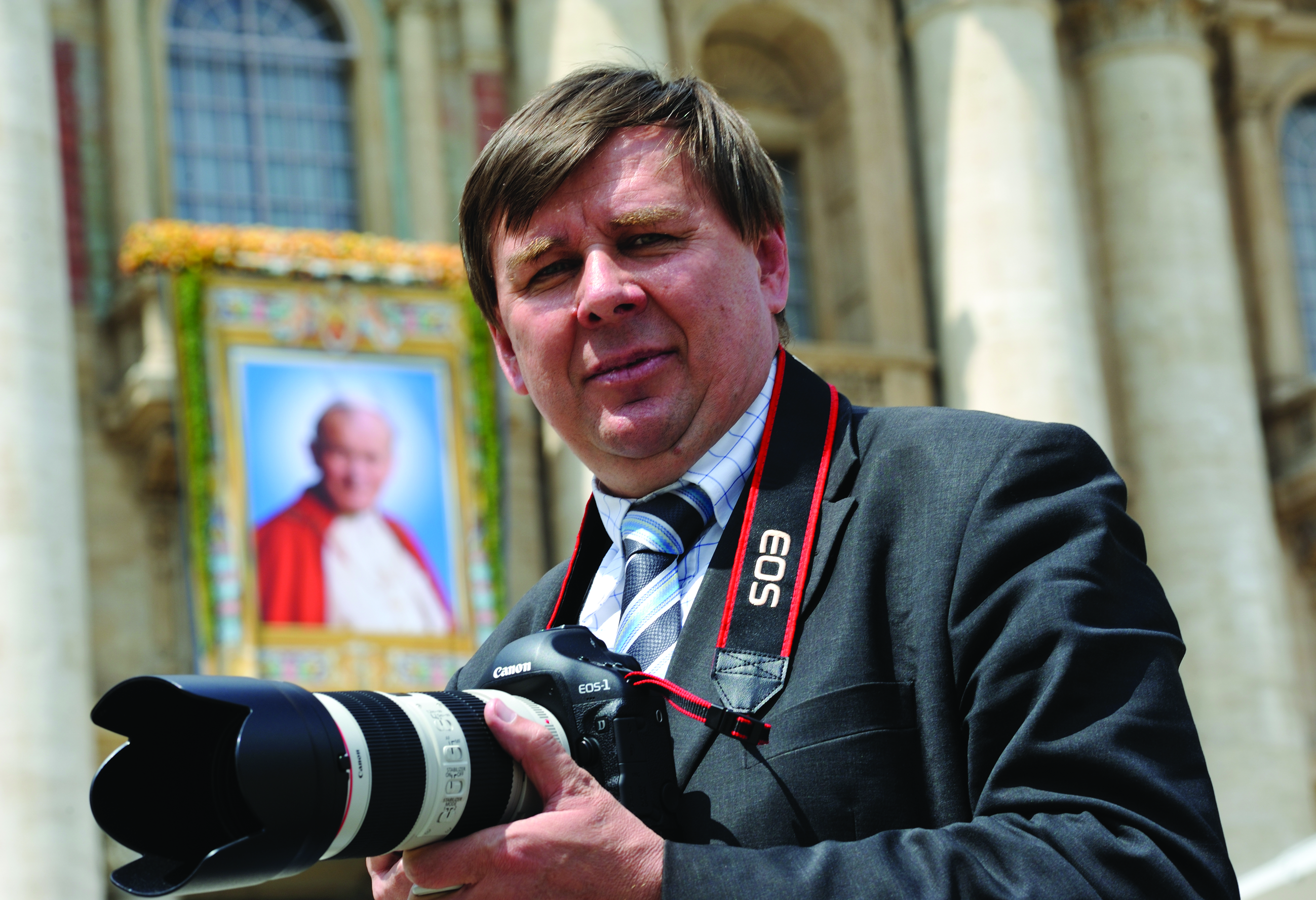
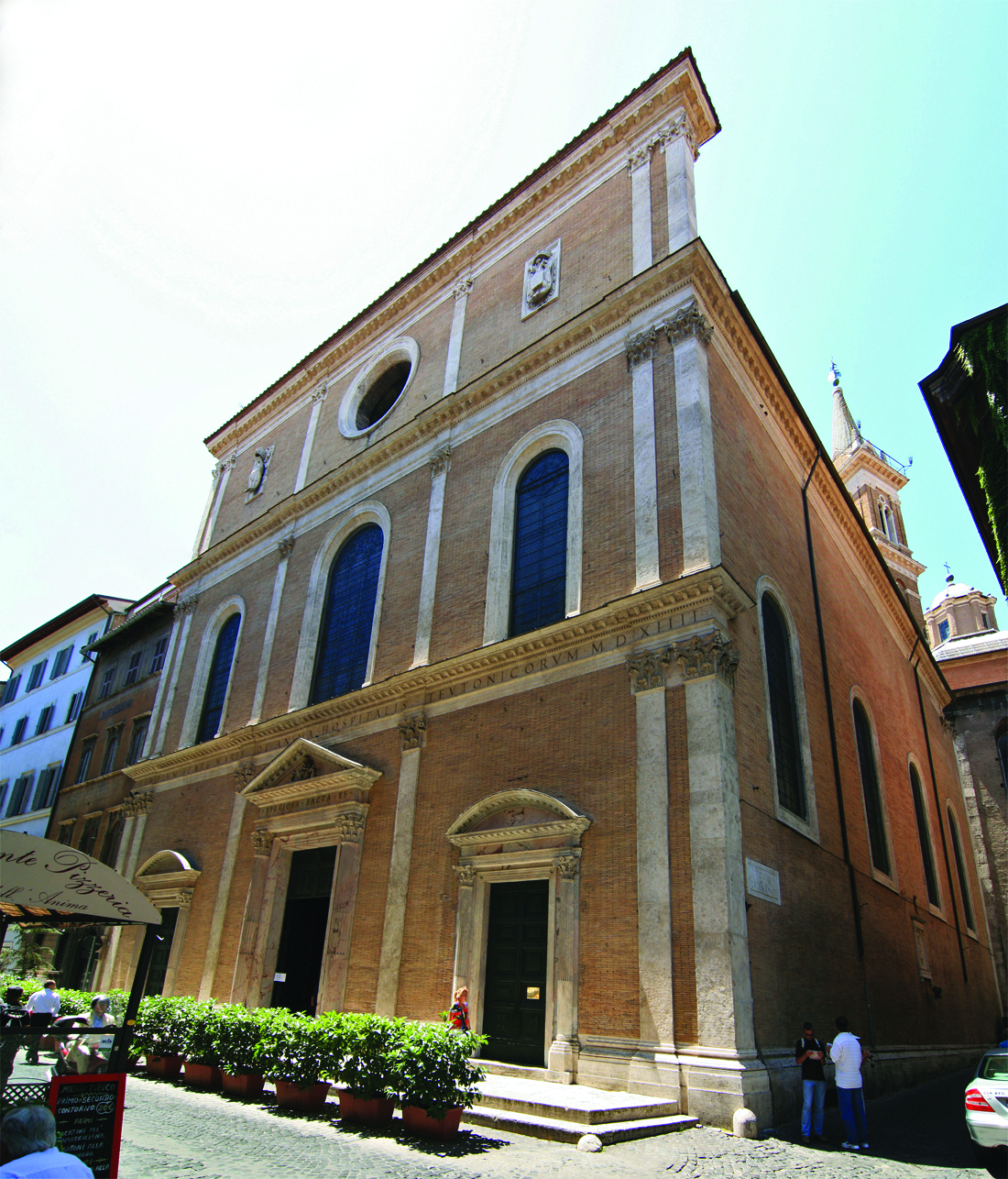
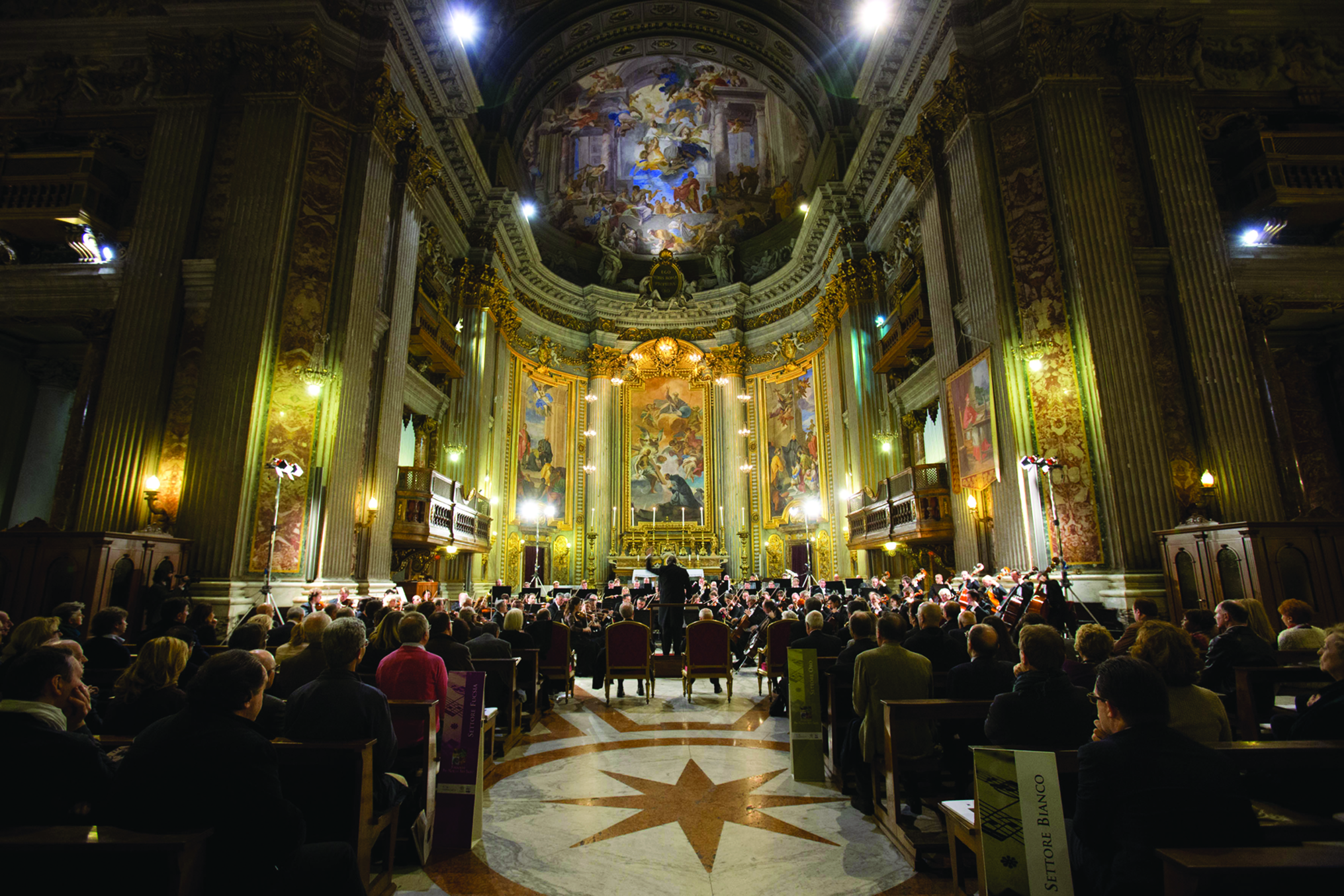
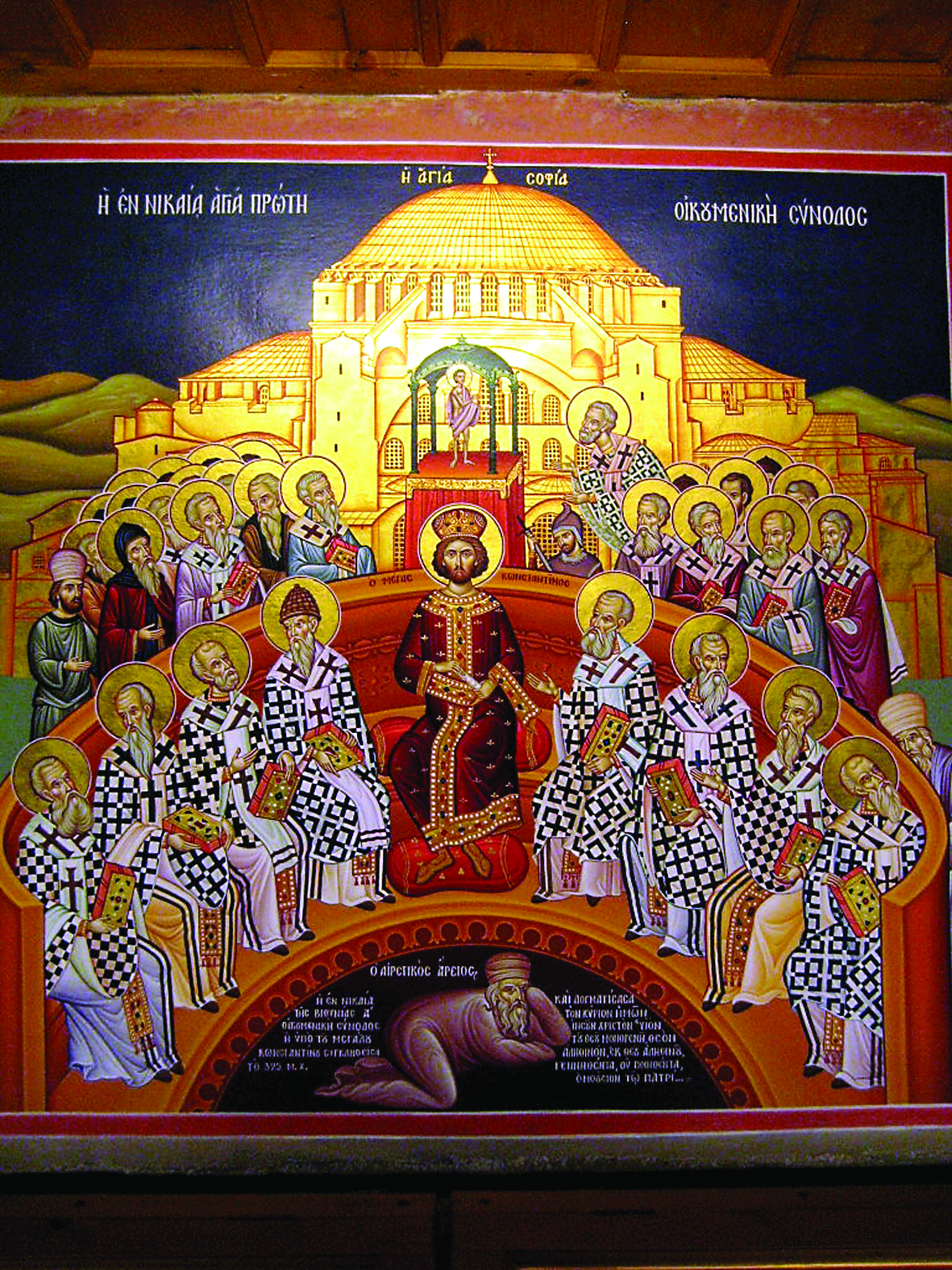
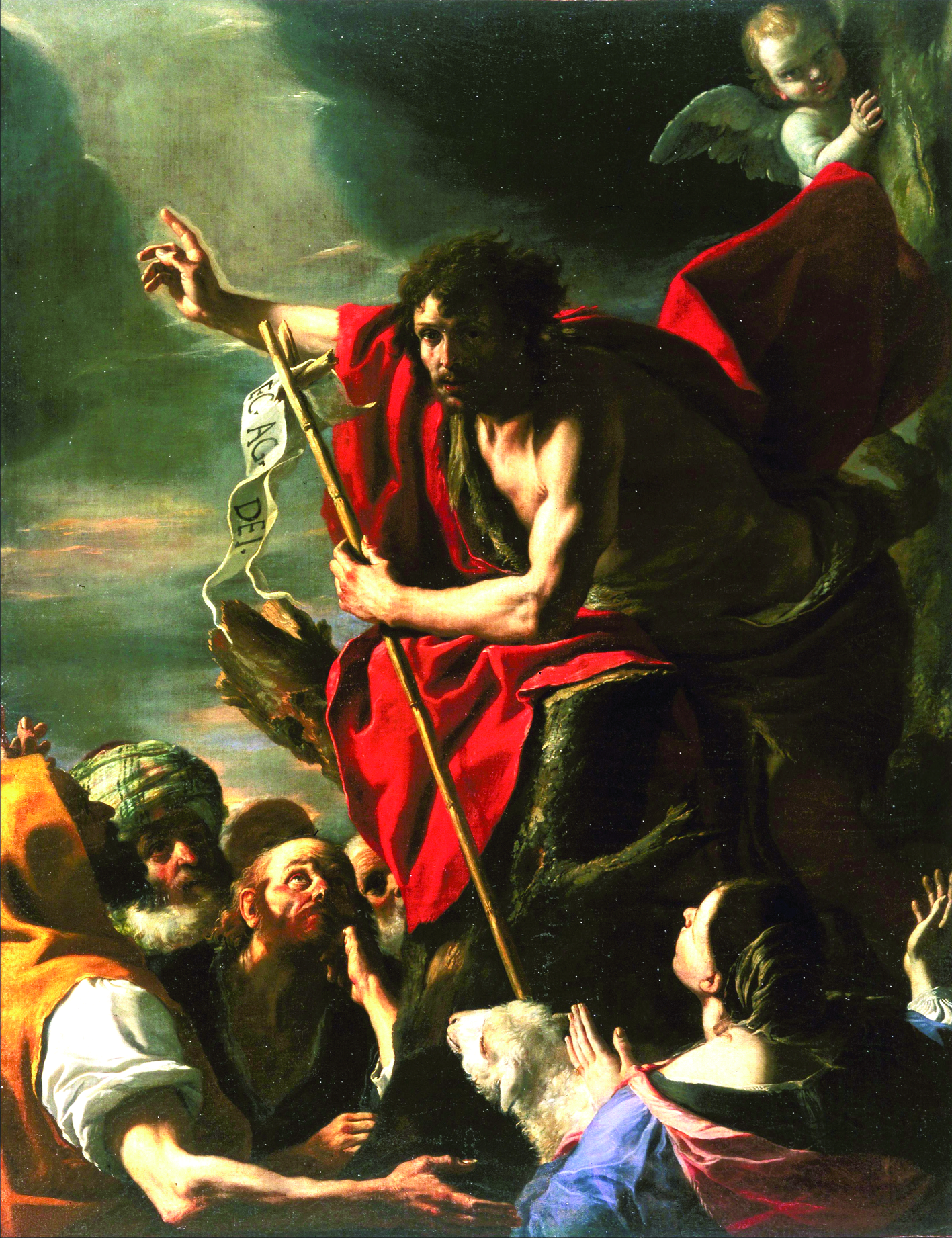
Facebook Comments